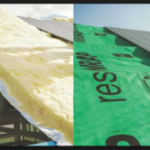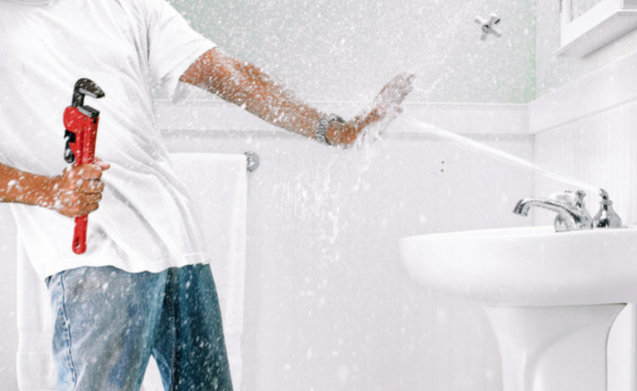
Properly Insulating & Sarking Your Home
By HOUSPECT Building and Pest Inspections|January 17, 2018
If you want to save money on your energy bills, properly insulating your home is the way to go. There are minimum standards required for insulation; however, that doesn’t mean you can’t go the extra mile to ensure the heat loss and gains in your home are fully optimized for the weather where you live.
There are a number of areas in your home where insulation will affect heat loss and gains: roofs and ceilings, walls, floors, and water pipes. It is especially essential to concentrate on ceiling insulation as that is where the most heat is lost in your home. Paying a little more during construction of a new home for energy efficient insulation will save you money on your energy costs in the long term.
Insulation Types
Insulation types are basically designed to keep your home warm in the winter and cooler in the summer. Due to the different climates throughout Australia, homeowners will choose either bulk, reflective, or combination insulation. As a rule, bulk insulation is used as a heat barrier that locks heat in when it is cold outside and keeps it out when the weather starts getting warmer.
For homeowners in tropical climates, reflective insulation acts as a barrier to radiant heat. If your home experiences a mixture of hot and cold weather, you can install insulation that uses a combination of bulk and reflective materials to improve the insulation values in your home.
R-Value & Proper Installation
The R-value of insulation is used to tell builders or homeowners how well the material will perform in respect to resisting heat flow. There are minimum requirements for R-values which are dictated by the Building Code of Australia (BCA). Again, the design of your home, location, orientation and climate will dictate the R-value requirements for your insulation. You can, however, exceed R-values recommended by the BCA by providing additional insulation and improve your energy savings.
Another consideration when it comes to the R-value of your insulation is proper installation. Compressing insulation will reduce the material’s ability to effectively control heat flow. Similarly, if you damage your insulation during installation it will adversely affect the R-value. It is important to think of insulation like other structures in your home. You wouldn’t leave gaps between walls, doors or windows – insulating your house is no different. Any gaps between reflective sheets or batts will compromise the R-value of your insulation and result in uncontrolled heat flow.
Sarking
Sarking is the most common type of reflective insulation for homes in New South Wales. The R-values that sarking materials will need to meet depends on the type of insulation and where it is being installed. It is important to ensure that sarking is installed correctly so that it provides the level of radiant heat resistance that best suits the design and location of your home.
The Your Home website, which is provided by the Australian Government, provides a detailed guide on sarking and other types of insulation that will help you make the right choices for your property. Pay particular attention to how different types of sarking such as single or double-sided should be installed for maximum efficiency.
There are a number of areas in your home where insulation will affect heat loss and gains: roofs and ceilings, walls, floors, and water pipes. It is especially essential to concentrate on ceiling insulation as that is where the most heat is lost in your home. Paying a little more during construction of a new home for energy efficient insulation will save you money on your energy costs in the long term.
Insulation Types
Insulation types are basically designed to keep your home warm in the winter and cooler in the summer. Due to the different climates throughout Australia, homeowners will choose either bulk, reflective, or combination insulation. As a rule, bulk insulation is used as a heat barrier that locks heat in when it is cold outside and keeps it out when the weather starts getting warmer.
For homeowners in tropical climates, reflective insulation acts as a barrier to radiant heat. If your home experiences a mixture of hot and cold weather, you can install insulation that uses a combination of bulk and reflective materials to improve the insulation values in your home.
R-Value & Proper Installation
The R-value of insulation is used to tell builders or homeowners how well the material will perform in respect to resisting heat flow. There are minimum requirements for R-values which are dictated by the Building Code of Australia (BCA). Again, the design of your home, location, orientation and climate will dictate the R-value requirements for your insulation. You can, however, exceed R-values recommended by the BCA by providing additional insulation and improve your energy savings.
Another consideration when it comes to the R-value of your insulation is proper installation. Compressing insulation will reduce the material’s ability to effectively control heat flow. Similarly, if you damage your insulation during installation it will adversely affect the R-value. It is important to think of insulation like other structures in your home. You wouldn’t leave gaps between walls, doors or windows – insulating your house is no different. Any gaps between reflective sheets or batts will compromise the R-value of your insulation and result in uncontrolled heat flow.
Sarking
Sarking is the most common type of reflective insulation for homes in New South Wales. The R-values that sarking materials will need to meet depends on the type of insulation and where it is being installed. It is important to ensure that sarking is installed correctly so that it provides the level of radiant heat resistance that best suits the design and location of your home.
The Your Home website, which is provided by the Australian Government, provides a detailed guide on sarking and other types of insulation that will help you make the right choices for your property. Pay particular attention to how different types of sarking such as single or double-sided should be installed for maximum efficiency.



